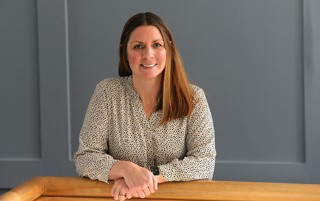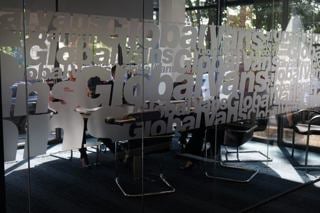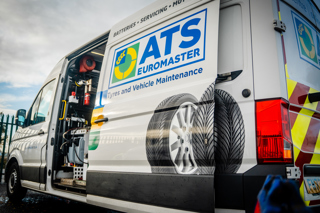After a relatively stable few years, the UK leasing sector was stung into action in 2022 as a host of acquisitions and mergers affecting some of the country’s biggest funders dominated the headlines.
As ALD bought LeasePlan and Lex Autolease parent Lloyds Banking Group snapped up salary sacrifice specialist Tusker, another merger was already quietly underway.
Leasys and Free2Move signed a memorandum of understanding towards the end of 2021, almost a year after Peugeot/Citroen parent PSA acquired Fiat/Alfa Romeo parent FCA to create Stellantis, becoming the world’s fourth biggest vehicle manufacturer.
The move, partly instigated to streamline the financial services operations across the PSA, FCA and Vauxhall/Opel partners, culminated in the creation of a single leasing company in April under the Leasys brand name (Free2Move still exists as a mobility brand in Europe).
Sebastiano Fedrigo (pictured above), the former Leasys UK managing director who was appointed to oversee the merger, became international markets director in April 2023, while ex-Free2Move managing director Matthew Boswell heads the consolidated UK business.
In his first interview since taking the job, Fedrigo describes how the new Leasys business “combines the best of both worlds – the strengths of Free2Move and Leasys, which were quite complimentary”.
The integration is advanced but not fully complete. However, the organisational structure has been created across all markets and the teams appointed, while the Leasys proprietary software system was chosen as the pan European solution.
There won’t be a mass migration to the new platform, though. To minimise disruption, Leasys will move customers across to the single system as it manages renewals. The renewal rate is “well above 75%, which is our objective”, Fedrigo said.
Leasys’s historic strengths lay in the markets where FCA was more predominant, especially Italy, Spain and UK, with its focus on multi-brand leasing and developing innovative products, such as the Miles pay per use subscriptions service.
Free2Move brought the powerhouse of the French brands, while Opel added a strong presence in Germany, Belgium and Portugal to give the business a broad geographical reach.
Free2Move also had robust customer services systems, supported by its extensive retail network, and was well represented in the broker and digital channels, but was primarily funding own-brand Peugeot and Citroen vehicles.
“We now have 14 brands within Stellantis and a strong electrification progress in the platforms that will benefit the new company,” Fedrigo said. “But we intend to fund all makes, not just Stellantis models.”
UK fleet of 100,000 by end 2026
In Europe, the company has a funded fleet size of 800,000 vehicles and is targeting one million by the end of 2026. In the UK, the merger creates an FN50 fleet of around 76,500 vehicles – the seventh largest in the country.
Fedrigo expects to surpass the 100,000 benchmark by the end of 2026, potentially moving Leasys up to sixth place.
“Our pillars will be multi-channel and multi-brand with strong electrification,” he said. “We have teams dedicated to manage B2B corporates, SMEs and retail separately with a plethora of more tools for the operational side to be able to respond to the needs of the corporate customer.”
The biggest change in the UK, he added, is the deployment of the Free2Move customer relationship management system and team across the business. It gives the company the capability to connect all the points of contact with the customer via a portal containing one vision of all the data, information and contracts, which will enable a more “coherent” relationship.
“We are already seeing a massive improvement on MPS scoring,” Fedrigo said.
The new systems will enable Leasys to put greater attention on the “classic corporate business”, with less focus on pursuing the PCH retail business. Instead, this will be taken care of via digital and broker channels.
Two priorities for growth are maximising the opportunities offered by the fleet transition to electric and increasing penetration in light commercial vehicles.
“We are operating in a market that is best placed to bring and facilitate the transition to electric vehicles. With leasing, it’s just one monthly payment with all the services attached to it,” said Fedrigo.
“We also need to improve on the LCV side. We have a strong product proposition and experience with PSA with classic (panel) vans and Fiat with specialist vans, and we also have the flexibility of our offering with electric and the hydrogen possibilities.”
Tailor-made product for van fleets
Free2Move has traditionally enjoyed a much stronger performance on van leasing in the UK – they accounted for 47% of its funded fleet last year, compared to just 3% for Leasys – buoyed by its higher share of the new van market.
The merged business will be looking to exploit this opportunity with the development of a tailor-made product for van fleets, taking into consideration the vehicles’ rougher life with higher mileage and, in most cases, greater likelihood of suffering damage.
“The LCV market is often crowded with a plethora of options when it comes to financing so the key element in this proposition is to have a tailor-made product that suits the needs of the van users with all the services, capacity of maintenance and the peace of mind on the return conditions of the vans with no bad surprises at the end,” Fedrigo said.
“That’s the angle we are taking, creating a specific long-term rental product that will come later this year.”
Also on the development pathway is predictive maintenance based on the wealth of data now available through digitisation, such as on vehicle health, usage and driving behaviours.
“Digitisation is a clear trend and will open up opportunities of services we can offer to the end user. The direction of travel is clear,” Fedrigo said.
Such digitisation more generally will also expand the type of products and services Leasys can offer, as well as enable it to strengthen its customer relationships.
This includes elements of self-service and greater flexibility over contract lengths, mileages and the ability to flip products, already available in France and Italy, where fleets can renewal with another Leasys product before the end of the contract.
“We have to streamline the way products are accessed, for enquiries or contract changes where there is no need to have any phone conversation,” Fedrigo said.
“Switching from one product to another, from a physical side should be the same from a financial side, adding an extension or increase mileage for example.”
He added: “With electrification of the platforms, the trend to review needs to be quicker and more flexible: the standard 36/48-month contract where you can’t leave doesn’t work anymore.”
Non-Stellantis business to peak at 20% of total fleet
Non Stellantis marques currently account for between 10 and 15% of the merged fleet in the UK. This is likely to rise to around 20% “but not much further than that”, Fedrigo said.
“Now we have all vehicles from micro with the Ami to six tonnes, which means we cover all powertrains. With the opportunity to offer other brands, it will push us to be a solus supplier for some customers.
“Before, some customers requested services that we couldn’t provide, for example other brands for Free2Move or more electric product for Leasys. Now we can increase our share of portfolio with our top customers, which is the low hanging fruit.
“But we also have to hunt for more customers and go after the big corporations in terms of user-choosers that we didn’t attract before. Now we are free from the constraints, and we are attacking those customers.”
The opportunities also extend to cross-border contracts with the ability for Leasys to respond to international key accounts.
“We will be able to respond to international tenders in a way that we couldn’t before,” Fedrigo said. “We now have a team in HQ to help the team with international markets.”






















Login to comment
Comments
No comments have been made yet.